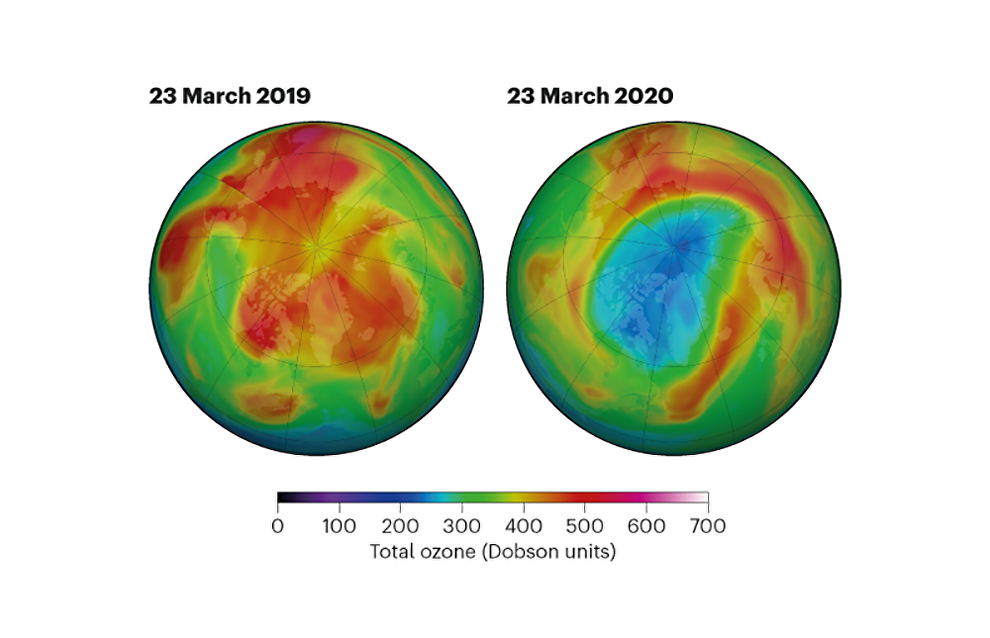Huge ozone hole opens in Arctic skies
Evidently, the largest ozone hole in the history of climate monitoring has opened up over the high latitudes in the Arctic. Currently, this zone of record-low ozone levels covers the central part of the region, a territory about three times the size of Greenland. The size of this ozone hole is comparable to the more famous Antarctic hole that forms in the southern hemisphere every year.
It should be noted that the depletion of the ozone layer has been recorded twice before in the Arctic, in 1997 and 2011. "There are some indications that it might be worse than in 2011," says Gloria Manney, an atmospheric scientist with NorthWest Research Associates (from Socorro, New Mexico). Manney cautioned that further depletion of the ozone layer could continue in the coming days.
"From my point of view, this is the first time we can talk about a real ozone hole in the Arctic," says Martin Dameris, an atmospheric scientist at the German Aerospace Center in Oberpfaffenhofen.
It will be recalled that every year low temperatures in Antarctica allow high-altitude clouds to form and cover the South Pole. Chemicals including chlorine and bromine from cooling agents and other industrial sources trigger a reaction resulting in ozone layer destruction. The ozone layer protects the Earth's surface from the Sun's ultraviolet radiation and is part of the stratosphere about 10-50 kilometers up.
According to Jens-Uwe Grooß, an atmospheric scientist at the Juelich Research Centre in Germany, these conditions are much rarer in the Arctic, because the weather and air temperatures are more variable. But this year, powerful westerly winds flowed around the North Pole and trapped cold air within a "polar vortex". With these very cold temperatures, high-altitude clouds formed, and this ozone-destroying reaction began.
Thus, by late March, there was a 90 percent drop in ozone at an altitude of 18 kilometers, from the typical 3.5 parts per million of ozone to 0.3 parts per million. "That's more than any ozone loss we have seen in the past," says Markus Rex, an atmospheric scientist at the Alfred Wegener Institute in Potsdam, Germany.
However, according to Paul Newman, an atmospheric scientist at NASA's Goddard Space Flight Center in Greenbelt, Maryland, things would have been much worse this year if nations had not come together in 1987 to pass the Montreal Protocol, the international treaty that phases out the use of ozone-depleting chemicals. Evidence of this progress is that the Antarctic ozone hole was the smallest on record last year.
Specialists believe that the next few weeks are critical. The Arctic ozone hole isn't a health threat now since the Sun is just beginning to move above the horizon in the high latitudes. Antje Inness, an atmospheric scientist with the European Center for Medium-Range Weather Forecasts in Reading, UK, says that atmospheric temperatures in the region have already started to increase so the ozone should start to recover as the polar vortex breaks apart in the coming weeks.
There is a small chance that the hole could shift to lower latitudes and more populated areas. If it does, people would have to use sun-block cream outside to avoid being sunburned. "Right now, we're anxiously watching what happens," says Ross Salawitch, an atmospheric scientist at the University of Maryland in College Park. "The game is not over yet."
Source: nature.com
